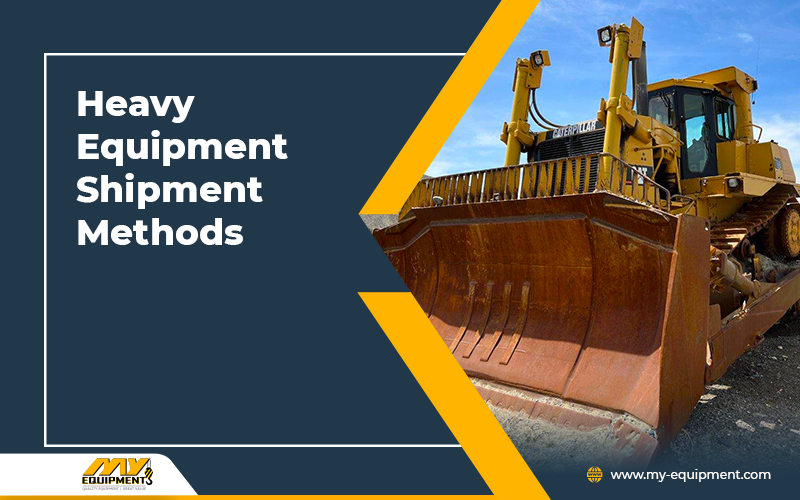Shipping companies play a very important role in the construction industry. Companies need to be able to plan with great flexibility and deal with different things like shifts in production and trade. The construction industry has gone through a lot of changes in the past couple of years, and businesses have implemented measures to deal with these changes. Clients also play a part in making the shipping process easier by decreasing any friction during the process. Before you decide to partner with a carrier, it is important that you know about the different shipping methods so you make a more informed decision.
Shipping Methods
In order to transport heavy machinery, there are four standard shipment methods that are used most often. The method you choose to ship your equipment depends on how you want it to arrive or if it needs specialized accommodation for its unique size. Some situations require that a combination of these techniques is used for shipment.
Container Shipping
In 1956, Malcolm McLean invented container shipping in the US to make intermodal transportation more efficient. This shipping model, in simple words, involves packaging the cargo in huge containers in order to ship it. Whenever goods are being exported or imported in large quantities, container shipping is used as it is more economical and flexible.
Usually, standard size containers are used in this shipping method. These containers can be 20, 40, 45, or 53 feet and can easily accommodate heavy equipment. The containers are built to meet international standards and make shipping more convenient. The shipping containers are completely sealed during the transit and have a huge volume capacity, which is why they are used to ship products all over the world.
LoLo Method
LoLo is short for lift on / lift off, and this method is also used to transport equipment and goods. In this method, cranes or derricks are used for loading and offloading containerized cargo on a shipping vessel. It is common for cranes to be on board LoLo ships as they make greater cargo transportation possible. Shipping heavy equipment by using the LoLo method is also a greener alternative since you will not need to drive the vehicles onto the transport vessel.
Roll On / Roll Off
In this method, instead of lifting the equipment by a crane, you simply drive the vehicle onto the ship and park it in place. If the equipment you are carrying is motorized, like tractors, it can simply drive onto the vessel on its own wheels. However, since not all equipment is motorized, such non-self-propelled machinery is placed on wheels and rolled on and off the shipping vessel. Usually, in this process, more than one transportation method is used because the equipment needs to be loaded on trains or lorries to get to its final destination.
Flat Rack Transportation
Some heavy equipment needs to be loaded either from the top or the sides, and for this type of machinery, flat rack transportation containers are perfect. The design of these containers allow cargo to stick out in the shipment process. There are a few different options of flat rack containers as they are either collapsible or non-collapsible and can be with or without walls. These containers are available in 20- and 40-feet standard sizes. Usually, these containers are used to accommodate huge equipment, like a D10R large dozer that would not fit into a standard container because of wall or roof constraints.


 1400 Broadfield Blvd, Houston, TX 77084,
USA.
1400 Broadfield Blvd, Houston, TX 77084,
USA.